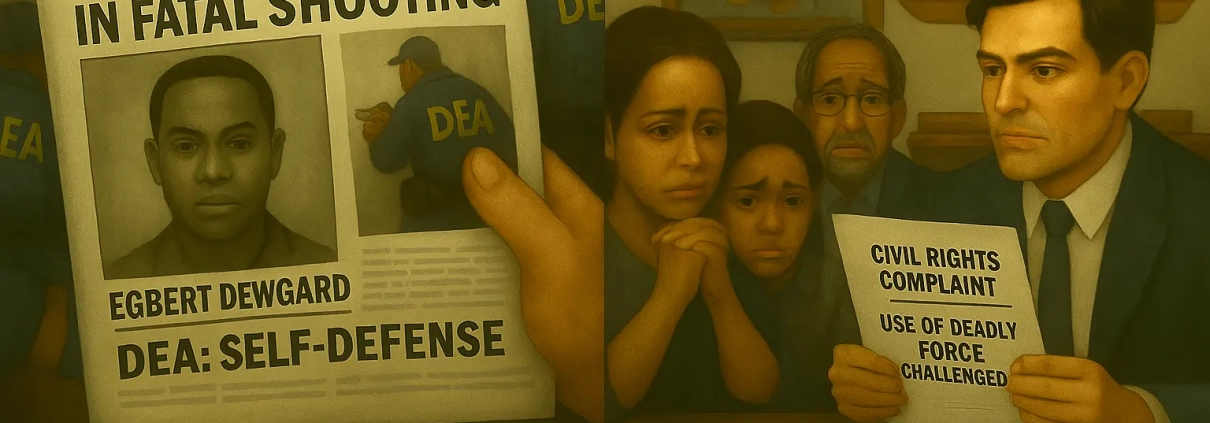The War on Drugs. Who Was Egbert Dewgard of New York City?
By Esther Claudette Gittens | Photo Copyright IQ INC.
An analysis of the available articles and legal documents concerning Egbert Dewgard of New York City reveals a narrative tragically familiar in the annals of American justice: a life defined in the public record not by its lived experiences, but by its violent and contested end at the hands of law enforcement. The case of Egbert Dewgard, who was fatally shot by a Drug Enforcement Administration (DEA) agent in May 2002, offers a compelling lens through which to examine media portrayals of law enforcement encounters, the complexities of legal accountability, and the enduring questions surrounding the use of deadly force.
Media coverage at the time, such as reports from the Brooklyn Paper, framed the incident within the context of a high-stakes drug bust gone wrong. Dewgard was cast as the subject of a DEA investigation, a narrative that immediately positions him as an antagonist in a dangerous drama. This initial framing is crucial, as it often shapes public perception before a full accounting of the facts can emerge. The articles detail a pursuit and a physical altercation, culminating in the fatal shooting. The agent’s justification, as is common in such cases, centered on self-defense, a claim that would be scrutinized in subsequent legal proceedings.
The legal analysis of the case, as can be gleaned from court documents, moves beyond the immediate drama of the event to the granular details of law and procedure. The lawsuit filed on behalf of Dewgard’s estate sought to challenge the official narrative, questioning the necessity of the deadly force used. These legal challenges represent a crucial counter-narrative, one that seeks to hold power to account and to reclaim the humanity of the deceased from the one-dimensional portrayal of a criminal suspect. The fact that the case was noted as a significant one by legal professionals underscores the gravity of the questions it raised about the conduct of federal agents on city streets.
What is ultimately most striking in analyzing the articles about Egbert Dewgard is the near-total absence of his own voice or story. He is an object of the narrative, not its subject. We learn about the DEA’s interest in him, the agent’s actions, and the legal arguments that followed his death. But of Dewgard himself—his life, his background, his motivations—the public record is largely silent. This is a common feature of such cases; the deceased is often reduced to a name in a case file, a symbol of a larger societal issue rather than a fully realized individual.
In conclusion, an analysis of the articles surrounding the case of Egbert Dewgard reveals a multi-layered story. On the surface, it is about a fatal encounter between a citizen and law enforcement. But deeper analysis reveals a commentary on media framing, the arduous path to legal accountability, and the power of the state to shape public memory. The case of Egbert Dewgard is a poignant reminder that the stories of such encounters are rarely as simple as they first appear and that the quest for justice often involves challenging the very narratives we are told.




Leave a Reply
Want to join the discussion?Feel free to contribute!